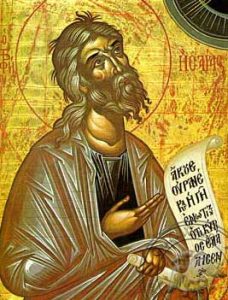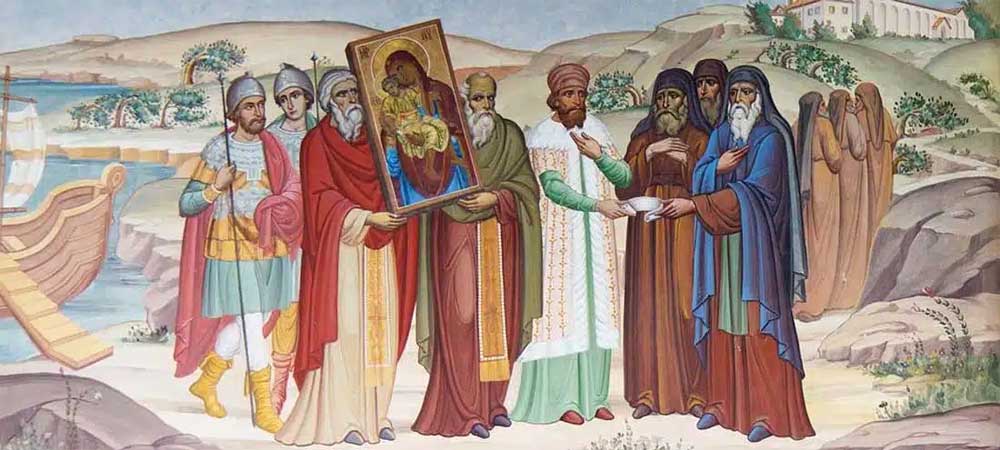Life of Isaiah the Prophet
 The Prophet Isaiah, is a major figure in the Old Testament of the Bible He is renowned for his deep influence on Judeo-Christian theology and his expansive prophetic writings. His life and works are primarily documented in the Book of Isaiah.
The Prophet Isaiah, is a major figure in the Old Testament of the Bible He is renowned for his deep influence on Judeo-Christian theology and his expansive prophetic writings. His life and works are primarily documented in the Book of Isaiah.
Isaiah lived during the 8th century BCE, a period marked by the reigns of kings Uzziah, Jotham, Ahaz, and Hezekiah in the kingdom of Judah. Tradition holds that Isaiah belonged to a noble family, possibly even having royal blood, which gave him access to the upper echelons of society and the political system of his time.
Isaiah’s prophetic ministry began around 740 BCE and lasted until approximately 681 BCE. His call to prophecy is famously described in Isaiah 6, where he sees a vision of God in His glory and is commissioned to deliver God’s message to the people of Judah and Jerusalem.
Major Themes and Contributions
Isaiah’s prophecies include warnings about the consequences of the Israelites’ sins and their departure from God’s laws, as well as messages of hope and redemption. He spoke extensively on issues of social justice, urging the people to reject corruption and to uphold justice and care for the needy.
Isaiah’s prophecies also have a significant eschatological component, looking forward to the end times. He prophesied about the coming of the Messiah, a savior who would bring peace and justice. These messianic prophecies are considered to have been fulfilled in the life and work of Jesus Christ, which is why Isaiah is often quoted in the New Testament.
According to tradition, Isaiah met a martyr’s death under the reign of King Manasseh, who was known for his idolatrous practices and opposition to Isaiah’s teachings. Isaiah’s influence, however, has persisted through the ages, deeply impacting theological thought and inspiring countless believers.
In Greece the wedding ceremony ends with “The dance of Isaiah” when the bride and the groom are led three times around the altar by the priest. People then throw rice at them as a sign of fertility.
In art he is shown as an elderly man who either holds a scroll or is being sown in half, or even holding a saw.
Orthodox nameday: 9/5
The Book of Isaiah
The Book of Isaiah is the first and longest of the books of the Major Prophets in the Old Testament of the Bible. It derives its name from the prophet Isaiah, who lived in Jerusalem, perhaps of aristocratic origin. His prophetic career spanned half a century, from around 742 © to at least 701. The book, however, contains the work of more than one man. Scholars now generally agree that chapters 1 to 35, known as First Isaiah, can be ascribed either to Isaiah himself or to his disciples; chapters 36 to 39 have been taken directly from 2 Kings 18:13-20:18.
Chapters 40 to 55, known as Second Isaiah, or Deutero-Isaiah, were the work of an anonymous prophet-poet during the latter part (c.545-540 ©) of the Babylonian exile. Chapters 56 to 66, known as Third Isaiah, or Trito-Isaiah, were written by authors unknown in detail but working around the end of the 6th century (525-500 ©) or the beginning of the 5th (500-475 ©). Some of the material may be derived from a period even later than these times (c.375-250 ©).
First Isaiah falls roughly into four periods: (1) From 747 to 736 BC the prophet speaks about internal political and economic policy;
(2) in 736-735 he addresses the crisis caused by the Syro-Ephraimite War, an attempt to force Jerusalem into an anti-Assyrian alliance;
(3) after a period of silence, he speaks again, addressing himself to the attempt of King Hezekiah to free himself from the status of a vassal to Assyria (716-711) again after a time of silence, Isaiah speaks of Hezekiah’s second attempt to establish political independence (705-701).
The writings from these periods fall into seven collections of sayings on themes of sin, judgment, and deliverance from the judgment. The Immanuel prophecies (chapters 6-12) are well known to Christians, who interpret them as references to Christ.
Second Isaiah comprises poems of various genres: oracles of deliverance, hymns, prophetic legal speech designed to show that the God of Israel alone is God, and discussion forms designed to repel opposition. In addition, the material of Second Isaiah contains the passages about the Servant of the Lord, also interpreted by Christians as references to Christ (42:1-4; 49:1-6; 50:4-9; 52:13-53:12).
Third Isaiah includes 14 independent sayings concerning the operation of the restored Temple, with corresponding emphasis on the sabbath and cult. The material comprises a short prophetic liturgy (56:9-57:13), an oracle of promise (57:14-21), an exhortation and promise (58:1-12), prophetic invective and threat (65:1-2), and a promise (65:8-25).
The final chapter contains a prophetic denunciation of the Temple and a rejection of the sacrificial cult, as well as three prophetic sayings that announce an imminent end and its results. Isaiah contains some of the most beautiful and best-known passages in the Bible. Two manuscripts of the book were found among the Dead Sea Scrolls.
